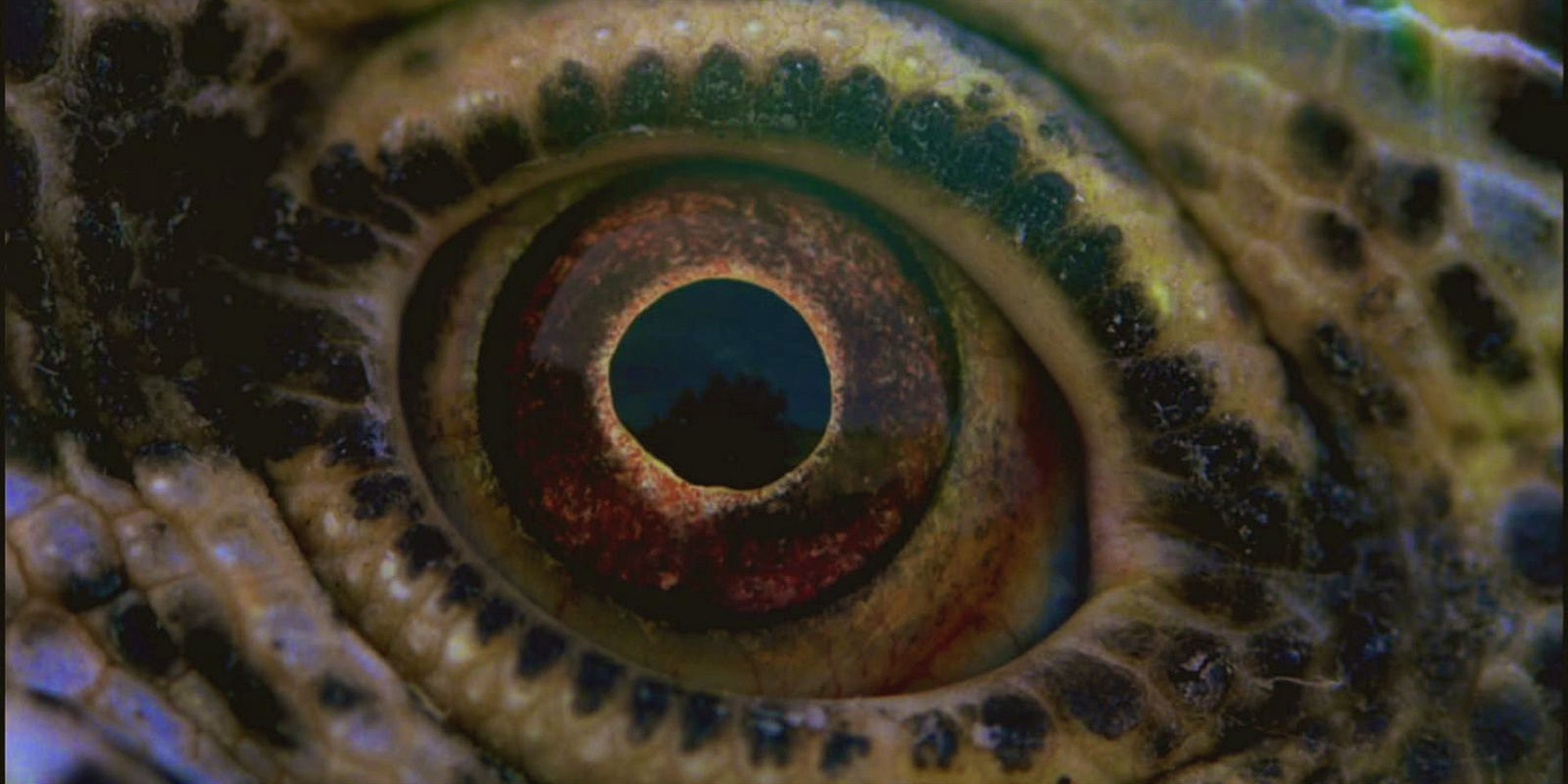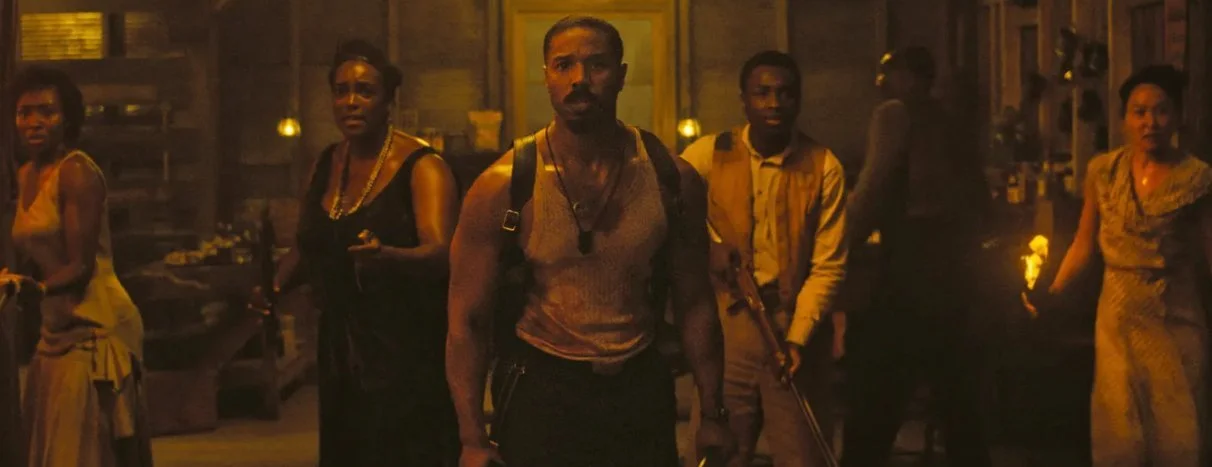
More or less a work in progress since years before "The Tree Of Life" was released back in 2011,Terrence Malick's much delayed "Voyage of Time: A Life's Journey" has been a near odyssey to reach the screen. Even years even before ‘Tree of Life’ masterwork, Malick had tried to develop a film about the origins of earth for Paramount in the 1970s entitled "Q." He eventually abandoned the project, but some of the footage, some of it shot nearly 40 years ago from "Q" is employed in "Voyage of Time." But at least for ten years during the making of “Tree of Life,” Malick and

90 minutes long, the Cate Blanchett-narrated version is a fascinating, but flawed piece of work. It encompasses a world ofideas for such a short amount of time. Something is indeed missing in this version, which starts off with Blanchett cooing a typical Malick-ian, breathy voice-over.
"Mother" she whispers tenderly, "you walked with me then in the silence. Before there was a world. Before night or day. Mother, where are you?” We see the sun rising, but then the film cuts to digital, hand-held, grainy footage (fairly rare in the Malick world outside of the GoPro cameras he’s been recently employing, of the homeless in Los Angeles and Refugee camps in Africa. These scenes tend to meander in the 90 minute version, which includes more grainy footage such as an Israeli Orthodox wedding, an Indian wedding, all of which are justly cut out of the 45 minute IMAX version.
Practically replicated in the film the big bang scenes in "The Tree of Life" are spectacular. The formation of the earth's core with eye-popping CGI, courtesy of FX wizard Dan Glass, is just magnificent. It’s awe-inspiring visuals, incredible similar to the opening celestial footage, “The Tree Of Life,” but it is so ravishing to look at, it never gets old. This portionof the film is cut in half in the IMAX version. Also the vague, almost maddening Cate Blanchett narration is replaced by a more straightforward Brad Pitt voiceover fit for planetariums all across the country. And, really, isn't this a film that is essentially meant to be played in space museums worldwide?
With an idea that could quite conceivably be one of the most ambitious in movie history, it is a real shame that Malick doesn't add more content after the Homosapiens segment and just decides to end his movie on an ambiguous note of what the earth's final days might look like, being swept up by a black hole and just vanishing as if it never existed.
As gorgeous as “A Life’s Journey” can be, there it’s rather shapeless and doesn’t seem to be as much sense of purpose in it compared to the IMAX version as it meanders amorphously. Ironically, even a longer running time than the IMAX version works against it. Malick tries to construct a fluid groove to build his film upon but cannot truly make it all his ideas gel, in just 90 minutes. Counterintuitively, longer running time with added scenes might have made the entire epic endeavor feel like a richer, more involving experience.
Voyage of Time: “The IMAX Experience"

As we’ve details, ‘The IMAX Experience is sharper and cleaner, but it’s also a different beast. The grainy digital footage ‘A Life’s Journey’ is replaced in the IMAX version by cutaways of a young girl, standing in a field and pondering the beauties of nature. Despite what it sounds like, these scenes area more subtle and nuanced break compared to the more direct and inconsistent attempts in the longer version at making parallels between today's world and the yesteryear of earth's first inhabitants. They also deliver much-needed fluidity to Malick’s film from sequence to sequence.
But what about earth's first inhabitants? Both films have the evolutionary process in full-on display: Sea creatures, Dinosaurs, Elephants, Apes, and eventually man. Malick wisely trims down many of the underwater sequences in the editing room as they ponderously take up much of the running time in "A Life's Journey." That isn't to say that they completely don't work, because when we are first introduced to the earth's first sea creatures we are astonished by what we see, but this repetition gets old; but not in the IMAX version. The Pitt narration is, unlike Blanchett’s, clear, concise and reminiscent of David Attenborough’s narrative style in theBBC nature documentaries he is so famous for contributing his vocals to (think “Frozen Planet”). The frustration with Blanchett’s rambling, inconsistent “poetry” in ‘A Life’s Journey’ is completely erased and makes for a cleaner, more enjoyable finished product. It is informative and contextualized enough to hold us enthralled in all its stunning images. There little not ponderous contemplation, just straightforward storytelling which is a breath a fresh air given the overtly ponderous hot air of his last two films “To The Wonder” and “Knight of Cups.”
There are also added visuals in the all-IMAX-shot version that don’t appear in “A Life’s Journey,” most probably becauseof how extraordinary they look in 4K compared to the 35mm version.
Of course, the science community will likely flip for many of the sequences that Malick has conveyed in both versions. If dinosaurs in "The Tree of Life" were just barely seen, his new doc does the creatures some epic justice. In the IMAX version Malick's iconic lenses show us the Jurassic era in full flesh and its a wonder to behold. He has dinosaurs preying, trying to survive, and eventually wiped out by an asteroid that leaves the screen black.
Subsequent to the end of the dinosaur age, the reformation of earth is also stunningly rendered, with the planet trying to heal and gain back what it had built before the planet was nearly destroyed. Malick does gracefulness like no one else and the elegance and fluid shape of these scenes is mesmerizing and a stark reminder to never take this beautiful planet for granted.

The biggest selling point of the 45 minute IMAX version is obviously the IMAX itself and its a big reason why ‘Life’s Journey’ cannot compete.If there ever was a film that could maximally display IMAX's effectiveness and awe-inspiring technological prowess, this is it. TO be visual nerds about it 2K versus 4K, 1080 resolution is just no match. The difference is simply enormous. The colors pop out more, as do the effects and the rock formations and the overall power is overwhelming. Jaws will drop and eyes will pop. Malick’s rapturous film no doubt will screen in planetariums worldwide, perhaps until the end of time.
A Voyage of Time [B/B+]
The IMAX Version [A-]





